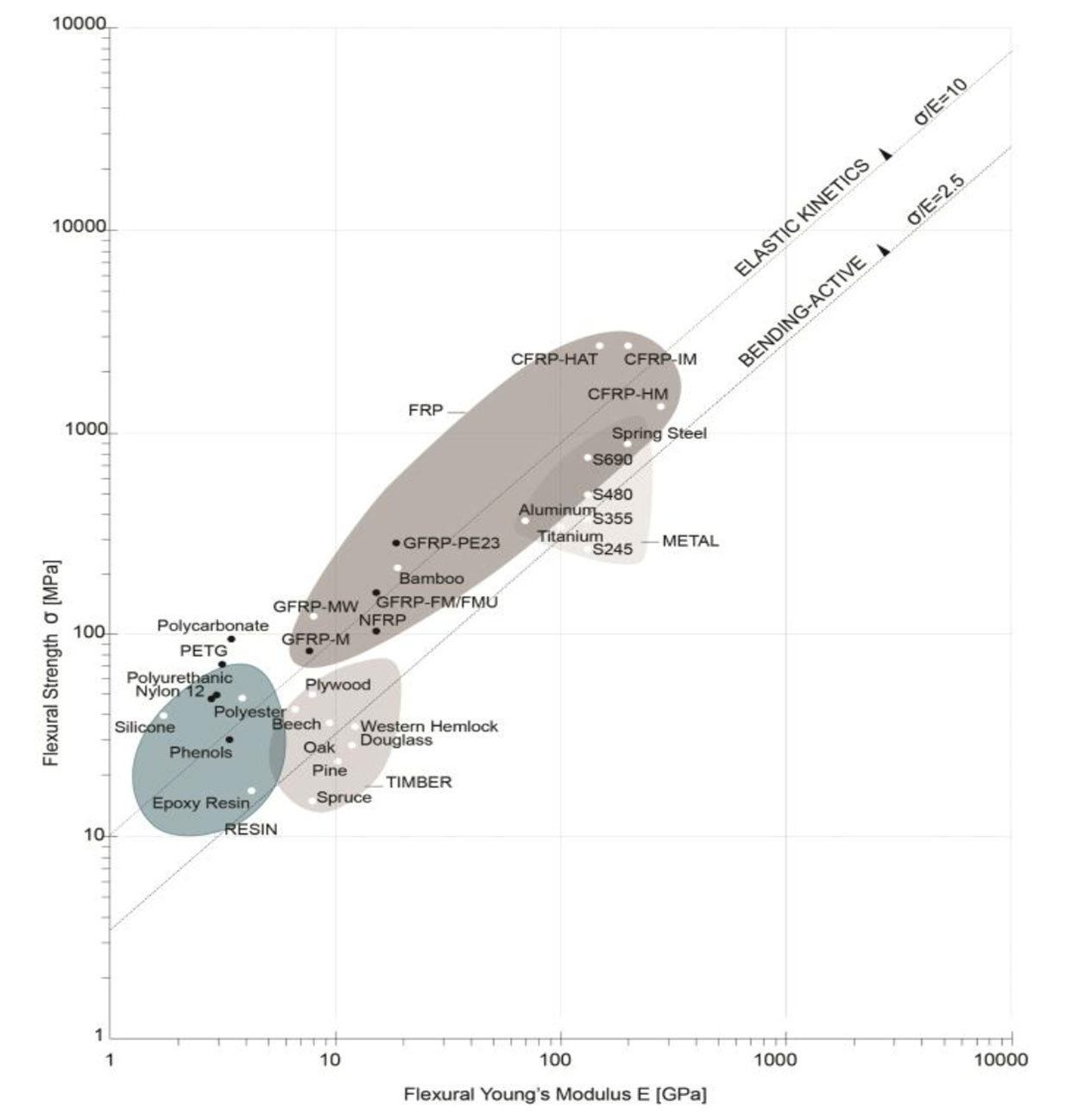DISCOVER MORE ...
MATERIALS
Of the wide range of cladding materials available, only a few lend themselves to use with complex compound surfaces without the need for expensive and complex post-forming or mold making tooling. Examples of these materials are;
- Light gauge sheet metal such as aluminum and stainless steel with various surface treatments such as brushed, polished, textured or painted finishes.
- Metal mesh.
- FRP (Fiber Reinforced Plastics: Glass, Carbon etc).
- Exterior grade laminate.
- Precast concrete.
The suitability of these materials is dependent upon a projects’ degree of curvature and the complexity of the geometry of the surface.
Materials can be categorized into three classes based on their physical properties such as stiffness, strength and rigidity. These are:
RIGID MATERIALS
Ceramics, stone, glass and other inflexible materials are characterized by their high stiffness and low ductility and require complex and prohibitively expensive fabrication processes in order to achieve curved surfaces. These do not lend themselves to complex geometry in a cost effective manner.
SEMI RIGID MATERIAL
Metals, timber, polycarbonates, plastics, sheet products comprised of natural or man made materials, bonded resins and fiber reinforced composites are all somewhat more ductile and may be formed more readily than rigid materials. These materials have varying degrees of suitability but as the radius of curvature decreases, so the choice of suitable materials decreases.
MOLDABLE / FLEXIBLE
Materials that can be molded or post-formed provide the greatest ability to conform to the most complex surface geometries, however the disadvantage with these materials is often the cost of the molds and patterns necessary to create individual components. Often times, more labor and expense is incurred producing the molds or formwork than in creating the part to be produced from these molds.
All materials have inherent advantages and disadvantages in the normal course of construction however when it comes to complex geometry, these advantages and disadvantages are amplified.
The common practice, left over from past methodologies, is to specify the same material for the entire surface of the building. In recent times, the geometry has become so complex that fabricators and suppliers have struggled to obtain single materials that can conform to the required shapes. By tailoring different materials, to specific locations, we open the door to a more readily achieved surface with lower cost and reduced schedule.
A graphical presentation of the range of different materials and their relative stiffness and rigidity is shown below:

The selection of cladding materials for a new building is most commonly driven by aesthetic and cost considerations, however when the geometry becomes very complex, the choice of suitable materials is more limited and may even require a combination of different materials to balance design and budget.
The CURVATUЯ™ cladding system:
- Accommodates all materials suitable for complex geometry.
- Permits the use of different materials in different locations to suit the geometry.
- Provides extremely high surface accuracy.
- Omits visible fasteners.
- Allows files to be transferred directly to fabrication equipment.

